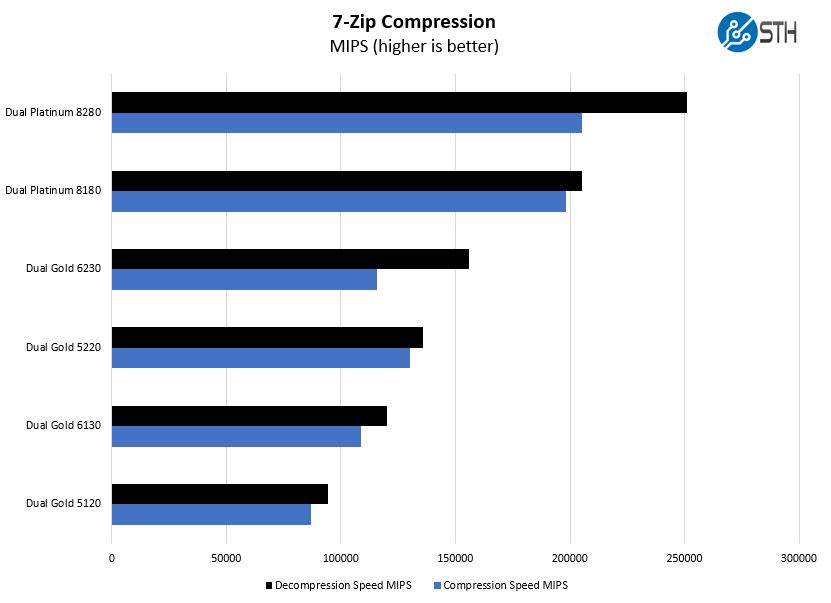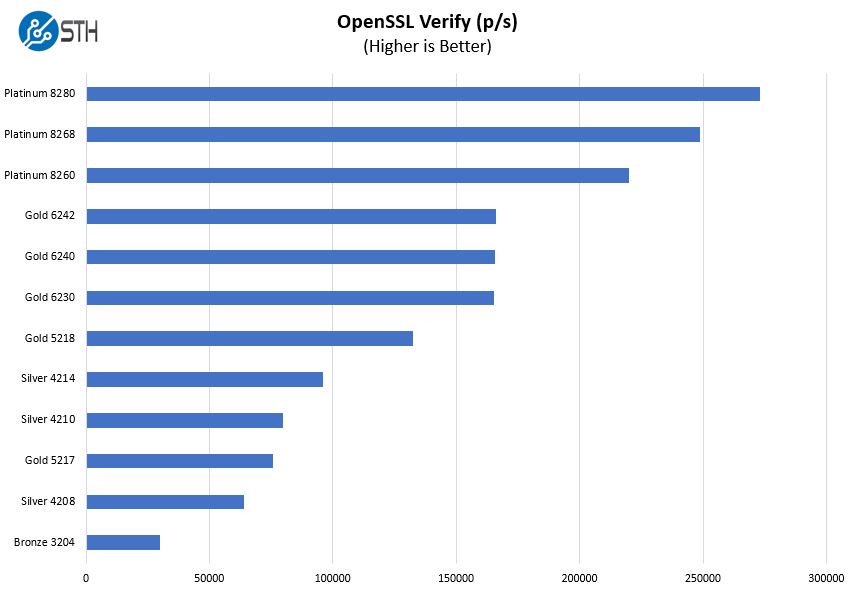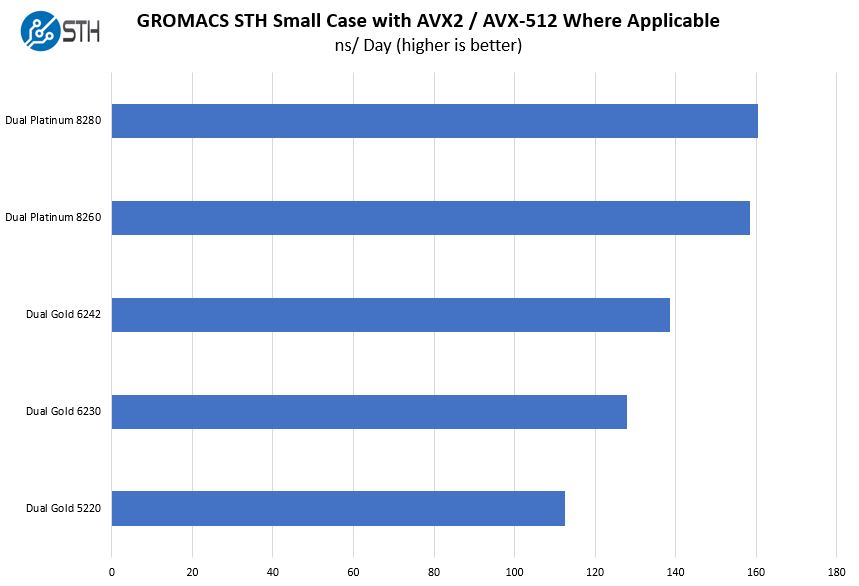HPE ProLiant ML350 Gen10 Performance
At STH, we have an extensive set of performance data from every major server CPU release. Running through our standard test suite generated over 1000 data points for each set of CPUs. We are cherry-picking a few to give some sense of CPU scaling.
Python Linux 4.4.2 Kernel Compile Benchmark
This is one of the most requested benchmarks for STH over the past few years. The task was simple, we have a standard configuration file, the Linux 4.4.2 kernel from kernel.org, and make the standard auto-generated configuration utilizing every thread in the system. We are expressing results in terms of compiles per hour to make the results easier to read.

Intel offers a wide range of CPUs for the HPE ProLiant ML350 Gen10. We were able to test the lower-end single socket configuration, but we instead wanted to show some of the mid-range to higher-end configurations in the server.
c-ray 1.1 Performance
We have been using c-ray for our performance testing for years now. It is a ray tracing benchmark that is extremely popular to show differences in processors under multi-threaded workloads. We are going to use our new Linux-Bench2 8K render to show differences.

As you can see, we even have the top-end SKUs using the dual Intel Xeon Platinum 8280 configuration. We do not think many of the HPE ProLiant ML350 Gen10’s will utilize these parts, but they are an option.
7-zip Compression Performance
7-zip is a widely used compression/ decompression program that works cross-platform. We started using the program during our early days with Windows testing. It is now part of Linux-Bench.

We also wanted to highlight some examples from both the first and second generation Intel Xeon Scalable processors. As one can see, Intel added a much larger performance boost in this generation than we had seen in previous generations at the same price points.
OpenSSL Performance
OpenSSL is widely used to secure communications between servers. This is an important protocol in many server stacks. We first look at our sign tests:

Here are the verify results:

While the HPE ProLiant ML110 Gen10 is marked as the single socket solution, the HPE ProLiant ML350 Gen10 can also be run in single-CPU configurations. The main difference here is that the ProLiant ML350 Gen10 can scale to higher-end CPUs along with higher capacity memory configurations even in single socket mode.
Chess Benchmarking
Chess is an interesting use case since it has almost unlimited complexity. Over the years, we have received a number of requests to bring back chess benchmarking. We have been profiling systems and are ready to start sharing results:

Some of the Intel Xeon Scalable SKUs changed dramatically. For example, the dual Intel Xeon Gold 6242 here is still a 16-core, high-frequency part designed for per-core licensing such as with Microsoft Windows Server 2019. The Intel Xeon Gold 6230, in contrast, has moved from a 16-core part to a 20-core part in this generation.
GROMACS STH Small AVX2 Enabled
We have a small GROMACS molecule simulation we previewed in the first AMD EPYC 7601 Linux benchmarks piece. In Linux-Bench2 we are using a “small” test for single and dual-socket capable machines. Our GROMACS test will use the AVX-512 and AVX2 extensions if available.

One of the areas that we have noted repeatedly is the AVX-512 performance of the new 2nd Generation Intel Xeon Scalable family. Chips like the Intel Xeon Platinum 8260 have always performed well in AVX-512 workloads, but we are seeing great gains in the Intel Xeon Gold 5200 and Silver 4200 lines as well on this test.
HPE ProLiant ML350 Gen10 Network Performance
Generally, in our reviews, we focus on storage and networking performance. Our HPE ProLiant ML350 Gen10 utilizes dual 1GbE networking so we are going to skip that in our review. This is basic functionality these days, so just about every server will perform similarly.
In the last part of our review, we are going to focus on power consumption and give our final thoughts. on the platform.




Dear Patrick,
Whereas for rackservers noise is not a direct concern, tower servers like the ml350 are generally used in small site-offices. Hence, they share the space with the office-workers. What is the noise profile of the server?
Michel, great point. We will look to add that more in future reviews.
You can adjust the thermal conditions in the advanced settings
I have some doubt about the quality of new HP Servers. We have this Server from last July in our organization (an italian school) and after few days the serial port, connected to a Legrand WHAD HE800 UPS ceased to work. We changed the UPS with an identical one and only after the server mainboard replacement we solved the problem, but for two weeks only! Misteriously, when then we needed to do some electric plant maintenance works, after three hours of power off, turning on the server I discovered that the serial port begans to work again! But it worked for three weeks only. Last week, tired of this issue, even though the server is warranty covered, I bought a 10€ USB to Serial Port adapter and now the UPS is communicating again. Considering the cost of the server, I didn’t expect to have this problem and to solve it in this way (by the way, this server has two USB ports only in the back panel, used for keyboard and mouse, so to connect the adapter I have to use a front port and to leave the door opened). I think the next server we buy will not be HP
Minor nuisance – the 4210 is 10c/20t, 4110 is 8c/16t.